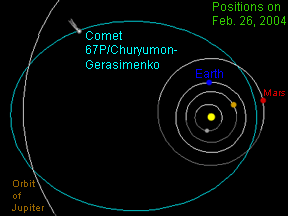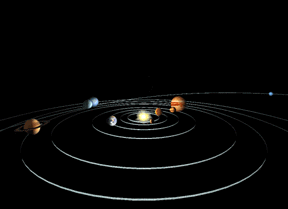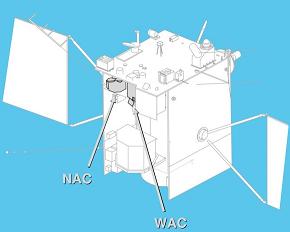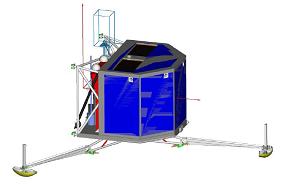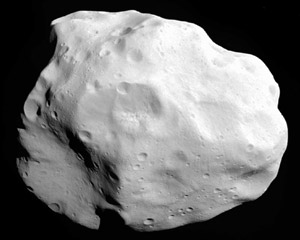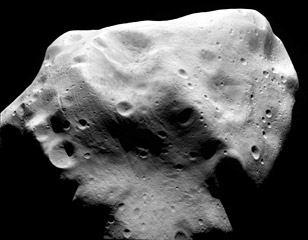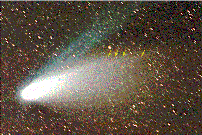Click on image for full size
Windows to the Universe original artwork by Randy Russell.
Comet 67P/Churyumov-Gerasimenko
Comet 67P/Churyumov-Gerasimenko was discovered in 1969 by Klim Churyumov and Svetlana Gerasimenko. The comet orbits the Sun once every 6.57 years. Its orbit brings it closer to the Sun than Mars at the closest point (called "perihelion"), and swings it a bit beyond the orbit of Jupiter at its furthest point from the Sun (called "aphelion").
This comet has an unusual history. Before 1840 Churyumov-Gerasimenko's orbit kept it much further from the Sun than does its current orbit. At that time its perihelion distance, the distance between the Sun and the comet at the point in the comet's orbit when it is closest to the Sun, was 4 AU (compared to 1.29 AU now). It was not possible to view the comet from Earth. In 1840 the comet passed near Jupiter and that giant planet's immense gravity altered the comet's orbit, moving its perihelion distance inward to 3 AU. Throughout the next century, Churyumov-Gerasimenko's perihelion distance continued to migrate inward, eventually reaching 2.77 AU. Finally, in 1959 the comet passed near Jupiter again and was shifted into its current orbit. The comet's perihelion distance is now 1.29 AU, which puts it about halfway between the orbits of Earth and Mars at its closest approach to the Sun.
Since Churyumov-Gerasimenko has only recently begun to swing near the Sun during part of its orbit, the comet has not lost much of its icy mass due to melting by the Sun. This means that the comet is relatively "fresh"; much of the material in it hasn't changed much since the comet was born in the early days of our Solar System. Scientists hope to learn about the early stages of our Solar System's evolution by studying comets like Churyumov-Gerasimenko.
The Rosetta space mission will visit this comet in 2014. The spacecraft includes a lander that will touch down on the surface of the comet's nucleus. Scientists think the nucleus of Comet Churyumov-Gerasimenko is about 3 km wide by 5 km long (about 2 miles by 3 miles).


